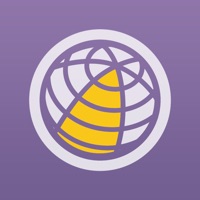
Veröffentlicht von Veröffentlicht von Jian Li
1. By using narrow zones of 6° of longitude (up to 800 km) in width, and reducing the scale factor along the central meridian to 0.9996 (a reduction of 1:2500), the amount of distortion is held below 1 part in 1,000 inside each zone.
2. In each zone the scale factor of the central meridian reduces the diameter of the transverse cylinder to produce a secant projection with two standard lines, or lines of true scale, about 180 km on each side of, and about parallel to, the central meridian (Arc cos 0.9996 = 1.62° at the Equator).
3. Prior to the development of the Universal Transverse Mercator coordinate system, several European nations demonstrated the utility of grid-based conformal maps by mapping their territory during the interwar period.
4. In the post-war years, these concepts were extended into the Universal Transverse Mercator / Universal Polar Stereographic (UTM/UPS) coordinate system, which is a global (or universal) system of grid-based maps.
5. The Universal Transverse Mercator coordinate system was developed by the United States Army Corps of Engineers in the 1940s.
6. Calculating the distance between two points on these maps could be performed more easily in the field (using the Pythagorean theorem) than was possible using the trigonometric formulas required under the graticule-based system of latitude and longitude.
7. The WGS84 ellipsoid is now generally used to model the Earth in the UTM coordinate system, which means current UTM northing at a given point can be 200+ meters different from the old.
8. The UTM system divides the Earth between 80°S and 84°N latitude into 60 zones, each 6° of longitude in width.
9. Each of the 60 zones uses a transverse Mercator projection that can map a region of large north-south extent with low distortion.
10. Zone 1 covers longitude 180° to 174° W; zone numbering increases eastward to zone 60, which covers longitude 174° to 180° E.
11. Distortion of scale increases to 1.0010 at the zone boundaries along the equator.
Kompatible PC-Apps oder Alternativen prüfen
| Anwendung | Herunterladen | Bewertung | Entwickler |
|---|---|---|---|
 Mercator Projector Mercator Projector
|
App oder Alternativen abrufen ↲ | 0 1
|
Jian Li |
Oder befolgen Sie die nachstehende Anleitung, um sie auf dem PC zu verwenden :
Wählen Sie Ihre PC-Version:
Softwareinstallationsanforderungen:
Zum direkten Download verfügbar. Download unten:
Öffnen Sie nun die von Ihnen installierte Emulator-Anwendung und suchen Sie nach seiner Suchleiste. Sobald Sie es gefunden haben, tippen Sie ein Mercator Projector - direct & inverse solution of UTM Projection in der Suchleiste und drücken Sie Suchen. Klicke auf Mercator Projector - direct & inverse solution of UTM ProjectionAnwendungs symbol. Ein Fenster von Mercator Projector - direct & inverse solution of UTM Projection im Play Store oder im App Store wird geöffnet und der Store wird in Ihrer Emulatoranwendung angezeigt. Drücken Sie nun die Schaltfläche Installieren und wie auf einem iPhone oder Android-Gerät wird Ihre Anwendung heruntergeladen. Jetzt sind wir alle fertig.
Sie sehen ein Symbol namens "Alle Apps".
Klicken Sie darauf und Sie gelangen auf eine Seite mit allen installierten Anwendungen.
Sie sollten das sehen Symbol. Klicken Sie darauf und starten Sie die Anwendung.
Kompatible APK für PC herunterladen
| Herunterladen | Entwickler | Bewertung | Aktuelle Version |
|---|---|---|---|
| Herunterladen APK für PC » | Jian Li | 1 | 1.1 |
Herunterladen Mercator Projector fur Mac OS (Apple)
| Herunterladen | Entwickler | Bewertungen | Bewertung |
|---|---|---|---|
| $0.99 fur Mac OS | Jian Li | 0 | 1 |

LocRec - Record Location with Photos by Route

Antipodes - the furthest distance in the earth

Magnetometor

Gaussmeter - Teslameter

Angle Conv
luca app

Google Chrome
MeinMagenta: Handy & Festnetz
QR Code & Barcode Scanner
Sticker Maker Studio
MeinVodafone

Google Authenticator
QR Code Scanner ·
AusweisApp2
Smart Cleaner - Daten löschen
Microsoft Edge
AbiMobil
Hermes Paketversand
Fonts